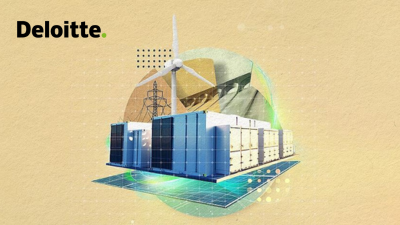WEN Membership consists of several energy companies that shape the world, not only through their actions and activities, but also through their ability to drive thought leadership at the highest level. Below are online resources provided by our Global Corporate Members that highlight energy issues, leadership development, and more!
 |
Elevating the Role of Energy Storage on the Electric Grid
Energy storage is critical for mitigating the variability of wind and solar resources and positioning them to serve as baseload generation. In fact, the time is ripe for utilities to go “all in” on storage or potentially risk missing some of their decarbonization goals. Continue reading >>> |
 |
IRS Issues Guidance for Direct Payment of Energy Tax Credits
The IRS published a notice of proposed rulemaking and public hearing, REG-101607-23, which proposes rules concerning monetizing energy tax credits by elective payment under the Inflation Reduction Act, on June 14, 2023. Written or electronic comments on the proposed rules are open through August 14, 2023, and a public hearing is scheduled for August 21, 2023. Continue reading >>> |
 |
What is Carbon Capture and Storage?
One of the tools to help Williams achieve net zero emissions is Carbon Capture and Storage (CCS). CCS refers to technologies that capture carbon dioxide (CO2) and store it safely underground. To participate more fully in the low-carbon economy, Williams is exploring opportunities to capture CO2 at their gathering and processing assets, compressor stations, and at customer facilities. Continue reading >>> |
 |
A Ripe Time for Municipal Gas and Waste Renewable Natural Gas Partnerships
Renewable natural gas can potentially play a key role in public gas utility decarbonization efforts. It introduces circularity in the production of a fuel that can be used in existing gas pipeline and power plant infrastructure, natural gas vehicles, and thermal applications for commercial, residential, and industrial customers. Continue reading >>> |
 |
2024 Oil & Gas Industry Outlook
The energy landscape continues to be shaped largely by four disruptors: geopolitical factors, macroeconomic variables such as high interest rates and rising materials costs, evolving policies and regulations, and the emergence of new technologies. These disruptors can have a significant impact on demand and supply, and trade and investment within the crude oil and natural gas (O&G) industry. Continue reading >>> |
 |
2024 Renewable Energy Outlook
In a bifurcated renewable landscape, the solar market brightened in 2023, while wind faced sweeping challenges. The latter bore the brunt of project inputs, labor and capital cost pressures, interconnection and permitting delays, and transmission limitations. Meanwhile, supply chain constraints started easing as historic clean energy and climate laws took effect. Continue reading >>> |
 |
The Decarbonized Power Workforce
The scope and pace of the energy transition in the United States largely depend on the interplay between technology and workforce. As explored in Utility decarbonization strategies, the US power sector’s decarbonization involves actions and technologies to (1) Renew supply by baseloading carbon-free sources, (2) Reshape demand by harnessing behind-the-meter sources, and (3) Refuel the transportation and power sectors with electricity, hydrogen, and other decarbonized fuels. Continue reading >>> |
 |
2024 Power & Utilities Industry Outlook
In 2023, the US power and utilities industry raised the decarbonization bar, deployed record-breaking volumes of solar power and energy storage, and boosted grid reliability and flexibility—with a healthy assist from landmark clean energy and climate legislation. All of this will likely continue in 2024. Industry fundamentals were mixed, with electricity sales projected to end 2023 down about 1.2% year over year (YoY), due largely to mild winter weather. Supply chain knots began to unwind, but shortages of steel, aluminum, transformers, and other components and materials still managed to disrupt the industry and boost costs. Continue reading >>> |
 |
2024 Chemical Industry Outlook
After a challenging end to 2022, many in the chemical industry anticipated a modest rebound in production in 2023. But, by mid-2023, several chemical companies significantly revised down their expectations. Multiple factors contributed to sluggish demand for chemicals globally, including a recession in Europe, inflation in the United States, and a smaller-than-expected rebound in demand from China. In addition, over-ordering in 2021 and 2022 resulted in high inventory levels, leading to months of destocking. Continue reading >>> |










